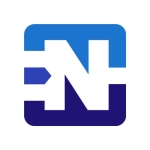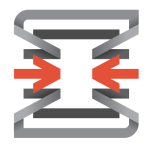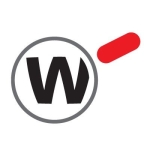What is our primary use case?
Generally speaking, it's like any other NGFW. It's quite a versatile solution for many aspects. It's not like a separate solution for firewalling, but a separate solution for web access. It's just very convenient to have everything in one box. On the other hand, when you need something, like a very top-rank solution for very specific things, like network intrusion prevention or network intrusion detection as a component of NGFW, I would say it looks weaker compared to the well-designed solution for its purpose. It has the same issue as many other versatile or unified solutions, so it's really convenient.
What is most valuable?
From our point of view, including me and my colleagues, I would say it's really good that they have a lot of integrations with third-party companies. Integrations with third-party companies are really convenient. API offers many convenient ways to integrate with open-source solutions. It's very, very good when you have everything in one package and one bundle.
What needs improvement?
If you check each and every point from this part, you will find some flow in an area, or you will discover another flow in another area. It's unfortunate, and not a usual situation and it is not just for NGFW but for any other tool, making it a disadvantage where improvements are required.
For the next release, I would prefer the tool to be more flexible in terms of general deployments because some additional companies must be deployed as a basic one. For those who have been working with their solutions for a relatively short amount of time, it would be better for the tool to offer an adequate knowledge base, not just very superficial information, or maybe not too much in that spot, something like average stuff. The tool should be more flexible in terms of deployment, and a more adequate knowledge base should be available.
About the UI, it is hard to comment because it has been more or less the same for many years. Professionals have already been using the tool's interface for many years. From a contemporary angle, the tool's interface looks a bit outdated from a UI point of view. The UI has been more or less static in terms of changes for the last couple of years. People can get to the UI and work with it in a couple of months, but compared to any other solutions on the market, which are more flexible and more rapidly evolving, I would say that UI should be considered for improvement.
For how long have I used the solution?
I have been using Check Point NGFW for two to two and a half years. My company is a partner and reseller of the solution.
What do I think about the stability of the solution?
For stability in high-load networks, I rate the solution a six to seven out of ten.
What do I think about the scalability of the solution?
Scalability-wise, I rate the tool an eight to nine out of ten.
There could be some performance issues under the heavy deployments and heavy load, but generally, if you are talking about the general scalability, it is quite good.
The tool is suitable for large and very large enterprise businesses. From our company's practice, I would say it is meant for banks and financial institutions. It is also quite popular in heavy industries. I would say it has a more or less wide list. It is more or less very popular in banking.
The tool can be scaled up, but even despite high scalability, it requires a lot of extra companies to bear a high-load environment and high-load networks, making it a bit unfair, especially when comparing some of the numbers with the real-world statistics it likes too far from reality.
How are customer service and support?
The solution's technical support is fine. I rate the technical support a nine to ten out of ten.
How would you rate customer service and support?
How was the initial setup?
If ten means easy, I rate the product's initial setup phase a six to seven out of ten. It is not a plug-and-play solution. It requires much more skill and effort for the specialist to set it up properly. Even if there are any PoCs, you can easily discover the difference between the easy setup process and the more difficult setup phases, and I would say that Check Point falls under the latter category as it takes much more time and effort. Sometimes, it could be buggy, and you just need to fix some other firmware or software update.
The solution is deployed on an on-premises model for large and very large enterprises.
The time to deploy the solution depends on the stage because you can talk about the initial deployment or you can talk about the deployment, including the integrations. I would say that the integrations would be really time-consuming. For the initial deployment, I would say it is a couple of days if it is not really a large installation and a couple of weeks are needed for the initial deployment.
What was our ROI?
ROI is like an artificial point in connection to a solution like Check Point NGFW, and its numbers are quite questionable.
Suppose the company has too many different solutions from different vendors. In that case, it becomes a greater burden in terms of support and everything, especially in terms of management of these solutions. I would say that Check Point would be a good choice if they are planning to migrate. If it is something like a choice between one NGFW from a vendor and you want to move into the Check Point NGFW, it becomes a bit more tricky. It becomes really hard to say about the ROI because it is just like a different approach. If you are moving between a lot of different solutions from different companies, then ROI will be really good and attractive.
What's my experience with pricing, setup cost, and licensing?
The tool's price is reasonable in case you are not using it in a high-load environment. If you are not expecting significant increases or peak increases in loading, it should be fine. If it is a really highly loaded VLE environment, and if you try to rely on the tool's official numbers, I would say you can put your environment and network in jeopardy because it becomes really unstable. For the last couple of years, the situation has changed, and it has become really tricky to understand why the tool's official numbers aren't aligned with real-world numbers, which is a big problem for the VLE customers because when they are just trying to consider their official stats and official scalability numbers, it might be tricky. VLE customers should have, like, a 20 to 30 percent extra, or else, at this point, it becomes much more expensive.
The tool's prices don't make any sense because we are not talking about MSRP prices for VLE. We are talking about the discounted prices, which could be a really, really huge gap between the MSRP and the discounted price. I don't think these numbers will highlight any beneficial aspect of the price for you.
What other advice do I have?
There needs to be accuracy in terms of scalability. It should be well-designed, and if the customer does not have enough resources or their own resources, it is better to involve an adequate number of SIs. The system integrator will do the trick, and if a person is experienced, then everything can be really good in terms of the certifications, the statistics, and everything else. The system integrator should do everything properly, but it will be quite expensive, especially if we are talking about large and very large enterprises. For mid-sized businesses, it should be fine because it is less tricky, and even the normal specialized person on the customer side should be fine with using it, as it can be quite easy. In any case, scalability is a bottleneck here.
I rate the tool a seven out of ten.
Disclosure: My company has a business relationship with this vendor other than being a customer.

















